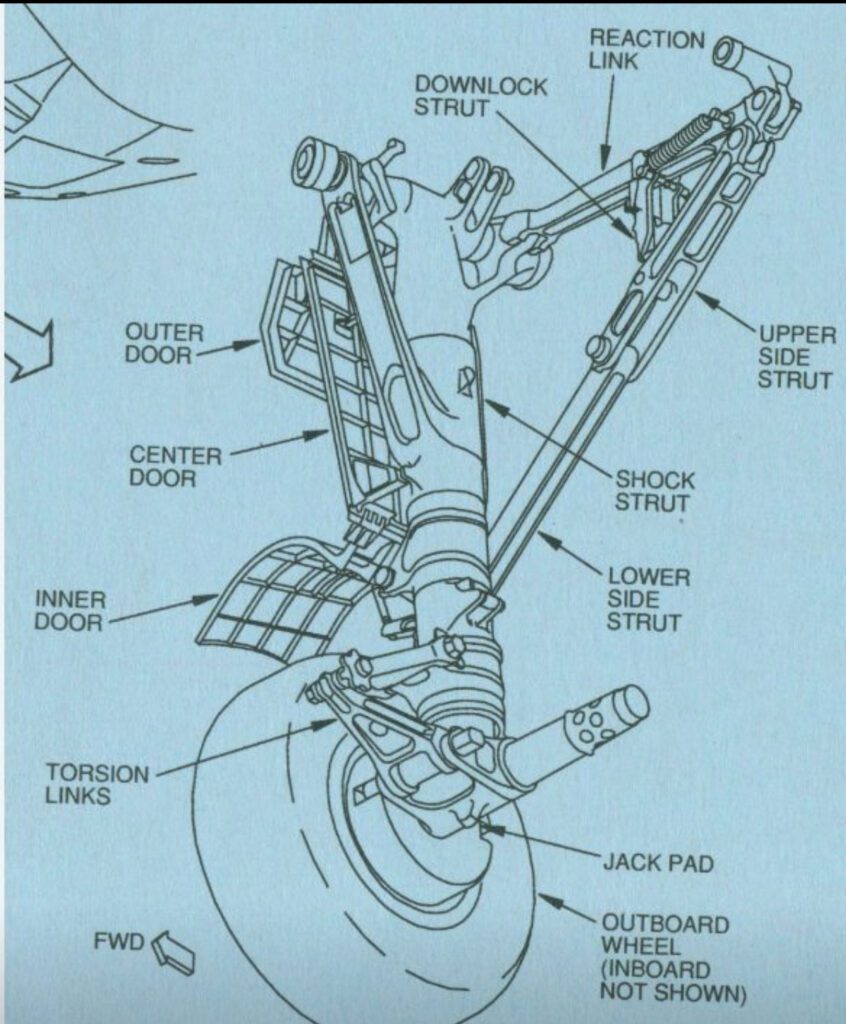
The 737NG is equipped with shimmy damping devices on the main mounts and on the nose wheel steering system.
Wheel vibration “shimmy” can occur due to several conditions and should be avoided when possible as under extreme conditions severe vibrations can result in gear collapse. To be able to avoid, you need to know what causes this phenomenon, what anti-shimmy devices the aircraft has and how to minimize the risk of shimmy.

Shimmy is actually a “free play” between the inner shock strut (blank) piston and the strut cylinder. A known condition is to land with one wheel first which results in a twist tendency of the inner piston related to the outer strut cylinder, where-after the piston is forced back to align with aircraft direction. Under some conditions this play exceeds an (twisting) “oscillation sequence” of more than 15 Hz obviously where shimmy occurs on the B737NG.
Nose Wheel
The Nose Wheel steering system is equipped with a Hydro-Mechanical Dynamic Load Damper that decreases nose wheel shimmy. This load damper connects to both steering actuators providing counter hydraulic pressure to reduce oscillation. (refer to the nose wheel steering post)
Example causes of shimmy occurrence are:
• Malfunctioning damper.
• Incorrect tire pressure. (not the same)
• Worn tires. (tread difference)
Main Wheels

The Main Wheels are equipped with Hydro-Mechanical shimmy dampers as a part of the torsion links that prevent rotation between the outer cylinder- and the inner piston. The upper link connects to the strut outer cylinder and the lower link to the inner (blank) piston with wheels. The shimmy damper connects both torsion links at the pivot joint of the links. When vibration occurs, piston movement in the damper is dampened by restricting hydraulic fluid through damping orifices.
Looking at the geometry of the link position, shimmy damping is most effective when the strut is maximum compressed in the ground mode, resulting in the links to be almost “lined-up horizontally”. When the strut is extended the links would be “stretched-out vertically” resulting in less shimmy damping capability.
Example causes of shimmy occurrence are:
• Malfunctioning damper. (air in damper)
• High speed landings.
• Incorrect tire pressure. (not the same)
• Worn tires. (tread difference)
• Free play of “hardware”. (torsion links, damper, etc.)
• Over serviced strut resulting in a higher “stretched-out” condition.
• Landing “smooth” or with low sink rate resulting in the same “stretched-out” condition.
• Incorrect (inner vs outer) brake adjustment.
Author – Wondeson getachew haile





